Intelligent software for planning trade fairs and events.
Digitalisation has firmly taken hold of our lives. Almost daily, we hear about new technologies. Many things are becoming more convenient, simpler,...
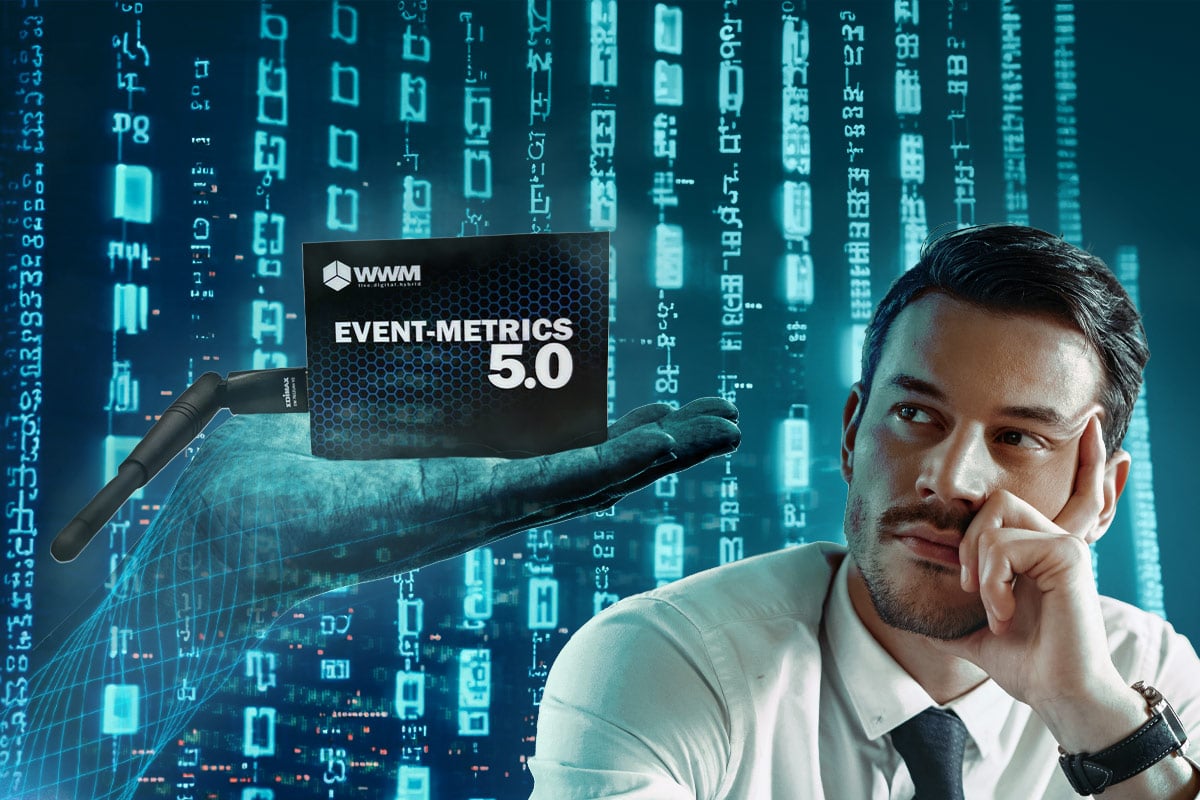
Nowadays, everything is analysed and tracked. The data is collected, analysed and, in the best case scenario, recommendations for action are created and implemented. However, the difficulty often lies in correctly understanding and interpreting the performance data so that recommendations for action can be derived that will move you forward. This is the case with Google Analytics and event tracking.)
That's why it's important:
Collect data, understand it, analyse it correctly and derive appropriate recommendations for action.
Especially at trade fairs or other events, there is some data that can be collected but is difficult to interpret. That is why I would like to give you a detailed guide to event metrics today. Event-Metrics is a software module that can determine data on trade fair and stand visitors as well as visit times in event marketing in compliance with the GDPR and thus optimise your next appearance. Let me illustrate this with an everyday example: Losing weight through fitness training! And get to know TIM, who is responsible for your success.
If you have set yourself the goal of losing a few kilos and supporting the whole thing with fitness training, then you should have drawn up a plan in advance as to how you want to tackle the project and, above all, what exactly the goal is! In the case of losing weight: how many kilos do you want to lose or what is your target weight?
It's similar with event marketing, or more precisely: trade fair planning. Or do you just go to a trade fair aimlessly? I hope not. Anyone who has ever planned a trade fair appearance knows how extensive it is. When, who, where and what are the main questions you have to answer when planning a trade fair. But the goal is always the same: Making contacts and collecting leads!
It's just like training or nutrition. These two factors (training and nutrition) are supportive of the goal: weight loss! And can be implemented anywhere in everyday life. You can train at home or in the gym. Outside is also possible, of course. It's the same with event metrics. Whether at a trade fair in Düsseldorf or in Munich. In-house exhibitions, congresses or conferences. The sensors that transmit the data to the software are very small and handy, so they can be used very flexibly.
In the age of digitalisation, a fitness tracker or smartwatch with corresponding features is often used to achieve fitness goals. There are companies that focus entirely on tracking fitness goals or smartphone manufacturers offer a corresponding smartwatch for fitness tracking. The question of who you trust more is of course up to you: A specialist or the egg-laying woolly milk sow.
In this case, Event-Metrics is the specialist for the event industry: targeted tracking in your event marketing. Tracking of your event or trade fair presence with appropriate parameters and 100% focussed on them. I will explain below what these parameters are and what they mean.
Important to know: You can view the measurement results of the entire event as well as those of each individual trade fair/event day. A single and a multiple measurement are also carried out. What exactly is this? A single measurement is when a person was present once within the relevant radius. A multiple measurement is when a person was present several times in the designated radius. This can be on one day or on several days.
In principle, both single and multiple measurements are carried out in a defined radius of between 2.5m and 25m (2.5m distances) around your exhibition stand. There is also the option of a 180° measurement if a measurement in only one direction is required.
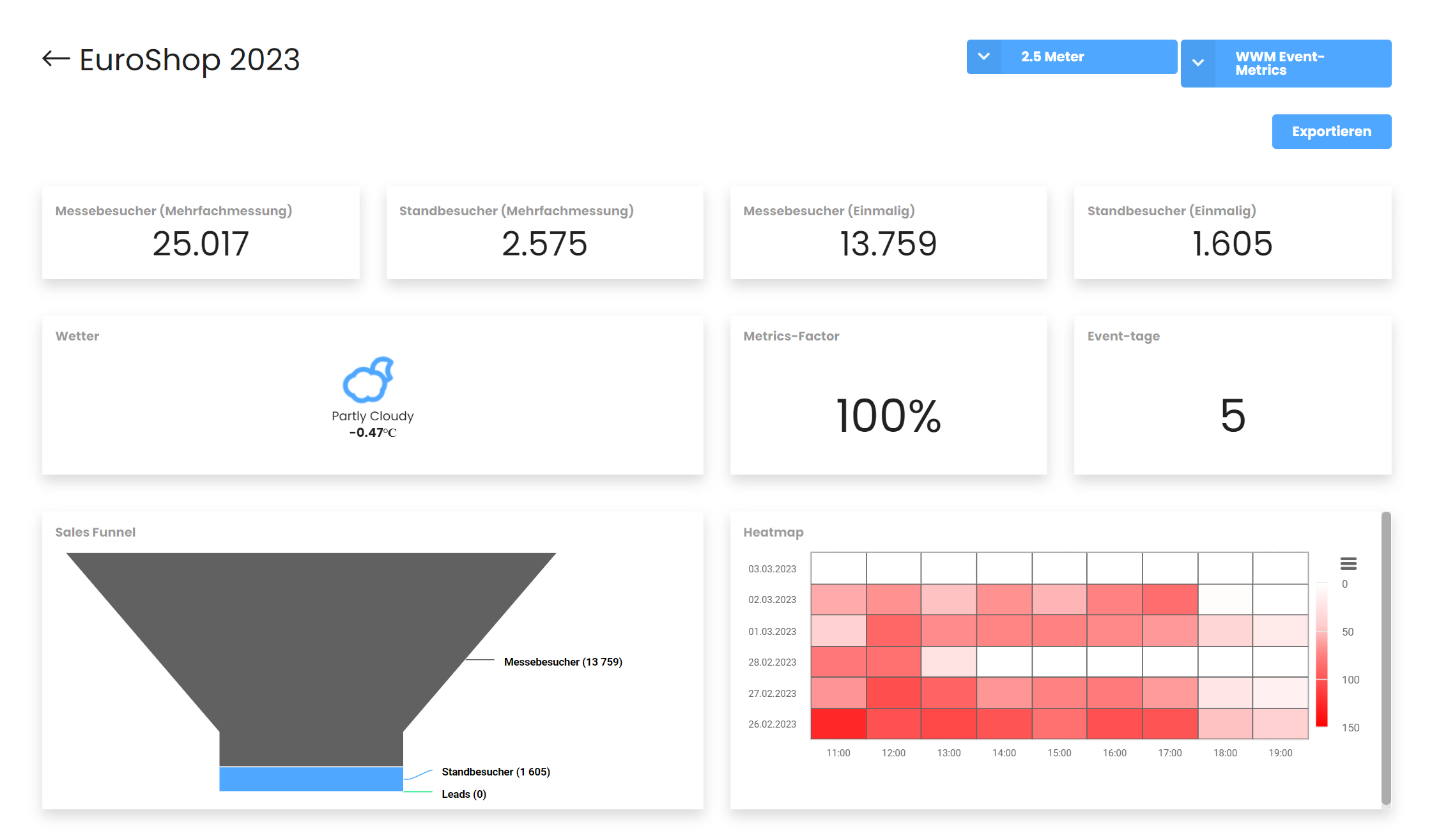
The 50m radius measurement is always carried out. What's behind it? From the 50m measurement and the direct measurement at the exhibition stand (radius 2.5m to 25m), you can draw conclusions about the long-distance effect of your exhibition stand.
Example: On trade fair day 1, there were 2,500 trade fair visitors within a 50m radius, but ‘only’ 40 trade fair visitors were detected within your set radius of 5m. This means that only 1.6% of the trade fair visitors who were within the 50 metre radius visited your stand. One possible reason: your exhibition stand is not appealing enough or the long-distance effect is unattractive.
You can find a corresponding analysis further down in the blog article.
In relation to our weight loss goal, we can differentiate between ‘good’ and ‘bad’ foods that help us to lose weight. The ‘good’ foods help us achieve our goal better than the ‘bad’ foods. In event metrics, a distinction is made between trade fair visitors (‘bad’ foods) and stand visitors (‘good’ foods). A trade fair visitor is a person who is at the trade fair or event and has NOT visited your trade fair stand. A stand visitor, on the other hand, is a person who has visited your stand. You also need to know that there are two measurements for trade fair and stand visitors: The single and multiple measurement.

The Trade Fair Multiple Visitors measurement records people who have been within a 50 metre radius of your stand several times.
The single trade fair visitor measurement only records a single person who has been within a 50 metre radius of your trade fair stand.
There are supposed to be trade fair visitors who come to the same stand several times. And this is exactly what is determined with this measurement. The only requirement is that the stand visitor must have spent at least 2 minutes at your stand.
The single measurement of stand visitors shows how many people spent at least 2 minutes at your stand on a single occasion.
If you would like to know how many trade fair visitors did NOT visit your stand, but simply strolled past it, then the following calculation applies:
NON-booth visitors = trade fair visitors - booth visitors
(This calculation applies to both multiple and single measurements)
The visitor time streams show a mix of dwell time and actual stand visitors. On the one hand, the length of stay is displayed in three categories so that you can easily recognise how long a stand visitor was with you. The total value shows the actual number of visitors to the stand in one hour.
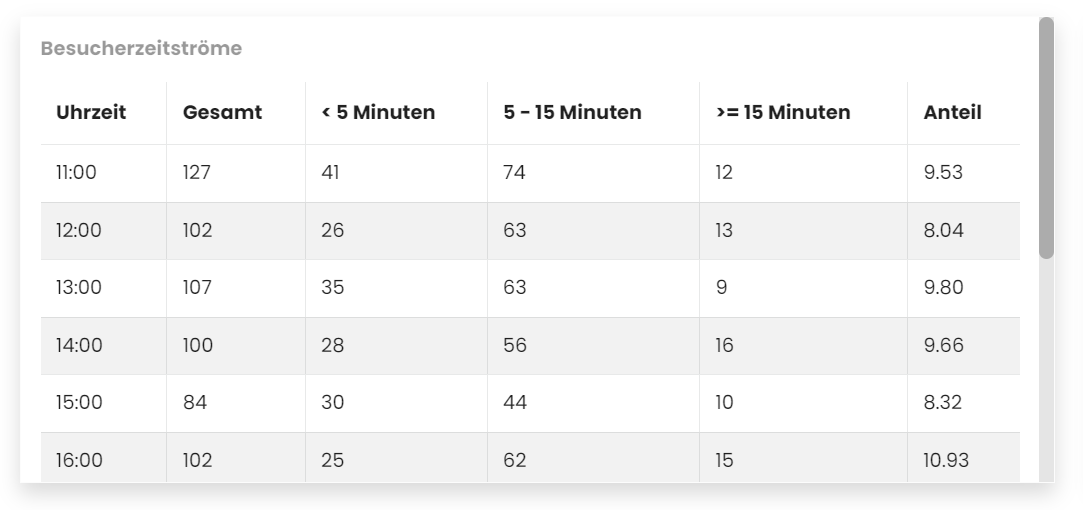
Returning visitors are only displayed in the daily analysis. Here you can see at what time the original one-time visitors returned to your stand and thus became ‘multiple visitors’.

This KPI is almost self-explanatory, but for the sake of completeness I'll explain it too. The average stay length gives you an overview of how long visitors spent at your stand on average per hour.
Depending on the size of your exhibition stand, you can equip individual areas with sensors and thus measure not only how long, but also where the stand visitors spent their time. Questions such as:
Are the exhibits more interesting or rather the touchscreens?
Do stand visitors tend to spend more time at the counter or in the lounge area?
can be clarified with this measurement variant.
The background to this variant: With this strategy, you can compare areas on your stand and draw conclusions about what is (more) interesting for stand visitors and what is not. The longer the dwell time, the more interesting the stand.
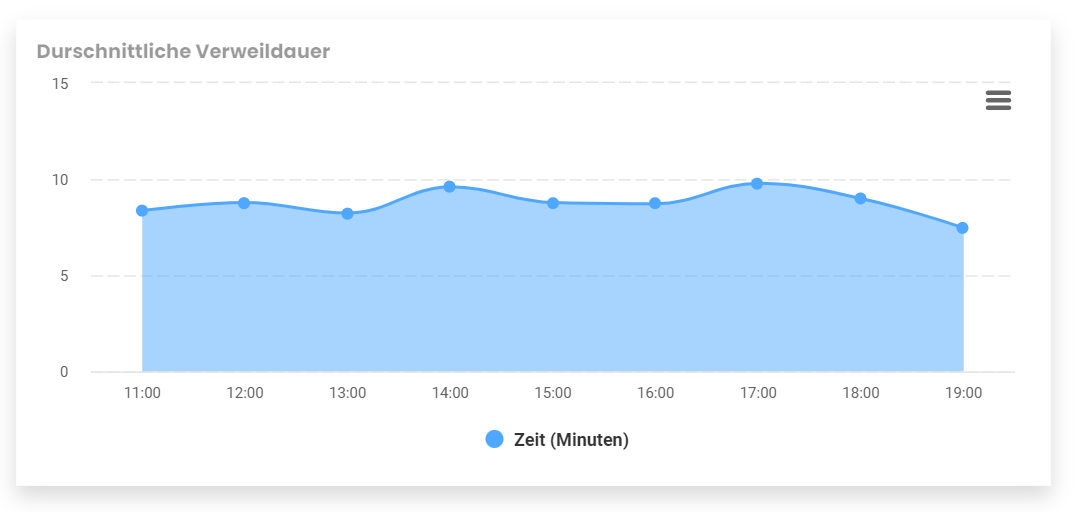
As already mentioned, the sensors ‘only’ measure in a defined radius around the trade fair stand. Event-Metrics uses this comparison ‘Trade fair visitors vs. booth visitors’ to determine how many of the trade fair visitors who were within the measuring radius of 50 metres visited your trade fair booth or were within one of the defined radii. In addition to a complete overview, a daily and hourly evaluation can also be viewed here.
Among other things, this measurement provides information on how good the long-distance effect of your trade fair presentation is and how interesting your trade fair stand is.

An important overview to see when and how many visitors were at your stand. This can help you to organise your personnel planning more efficiently.
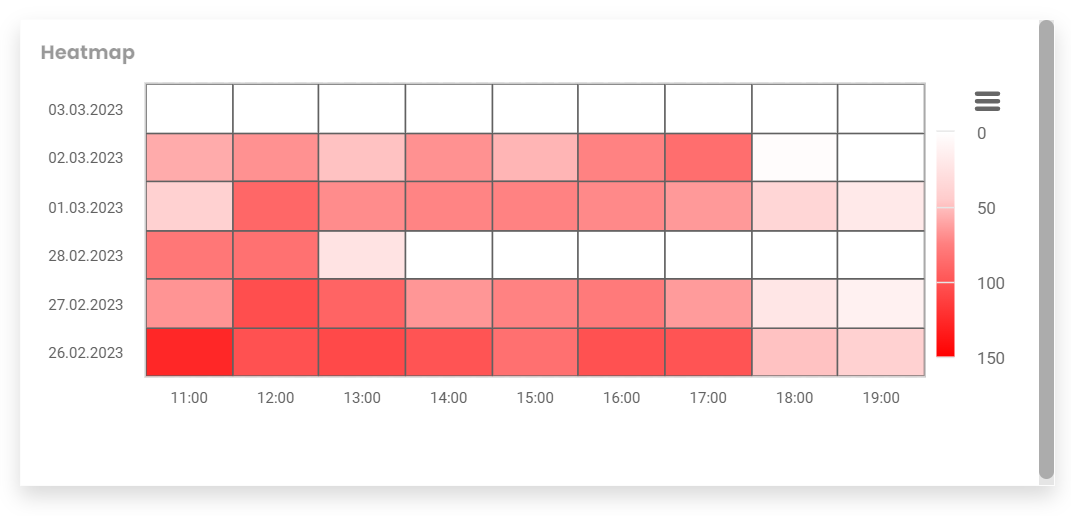
TIM is probably the most important indicator of your trade fair success. TIM stands for Total Interaction Minutes. What does that mean? TIM shows you, for the entire duration of the event, how long the trade fair visitors interacted with your stand.
‘TIM is calculated as follows:
TIM = ⌀ visitor time x number of stand visitors (multiple measurement)
Example: Visitors spend an average of 9.45 minutes per day at your stand. You had a total of 987 stand visitors over the duration of the event. This means for the calculation of TIM:
9,45 x 987 = 9.327,15
During the entire event days, the trade fair visitors interacted with or spent 9,327 minutes at your stand. This corresponds to 155 hours and 27 minutes.
Ultimately, the decisive factor must be how many minutes your stand visitors spent interacting with your stand. If you have a high TIM, this means that visitors to your stand felt at home there. There was a lot to discover, many good conversations and probably one or two activities where stand visitors had to interact themselves.
If the TIM is low, you need to think about it: How can I ‘bind’ visitors to my stand for longer?
Have you now tracked and analysed the most important data for your training goal over a certain period of time? Very good, because this is exactly what you need to do to achieve your medium to long-term training goal. Keyword: optimisation!
The same applies to event metrics. As you can see, Event-Metrics can track a lot of things, which provides you with a lot of meaningful information for your next event. In addition to the number of trade fair visitors within a 50 metre radius of your trade fair stand and direct stand visitors, the length of stay and the best visitor frequencies can also be determined. This is valuable information for your event marketing in order to save costs, among other things. Use the results to deploy staff more efficiently, reduce exhibits if necessary or position them differently.
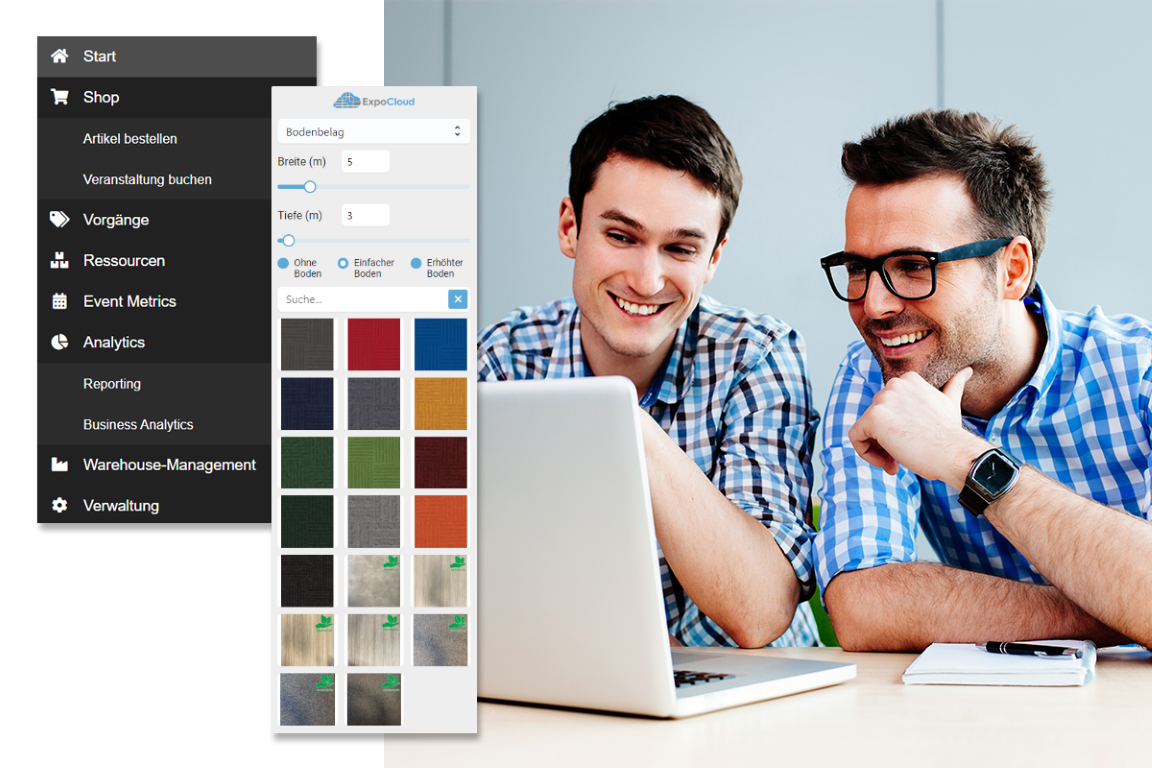
Digitalisation has firmly taken hold of our lives. Almost daily, we hear about new technologies. Many things are becoming more convenient, simpler,...
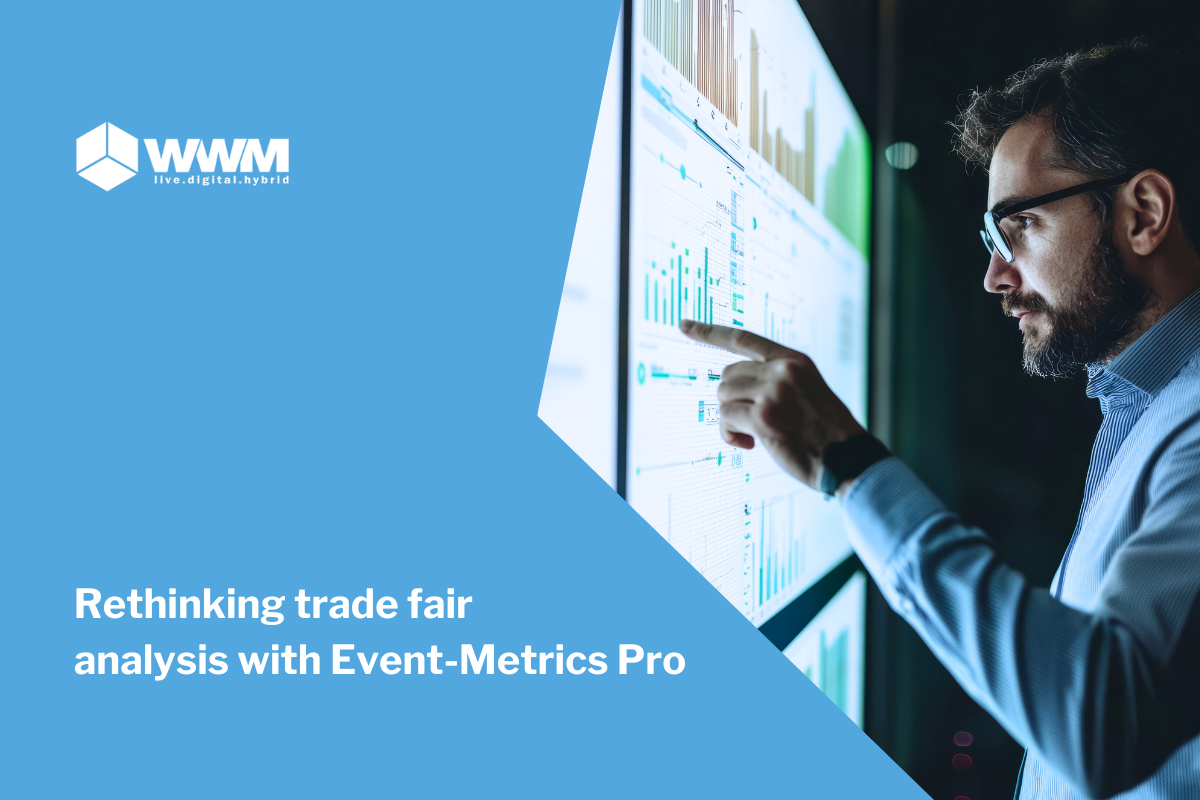
What if you knew exactly what was happening at your trade fair stand? Imagine this: Your team has invested weeks and months in conception, design and...

Efficient inventory management with digital tools Managing a warehouse is a complex task, especially with the large number of interlinked workflows....